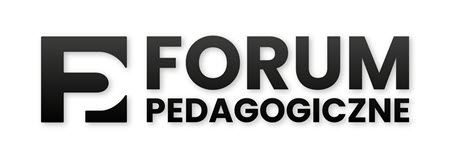Arnheim R. (1974/2004). Sztuka i percepcja wzrokowa, tłum. Mach J., Łódź: Oficyna s.c.
Google Scholar
D'Angiulli A., Maggi S. (2003). Development of drawing abilities in a distinct population: Depiction of perceptual principles by three children with congenital total blindness. ,,International Journal of Behavioral Development”, nr 27, s.193-200.
DOI: https://doi.org/10.1080/01650250244000191
Google Scholar
Gill R. (1997). Zasady rysunku realistycznego, tłum. Mach J., Łódź: Galaktyka.
Google Scholar
Gombrich, E. (1981). Sztuka i złudzenie, tłum. Zarański J., Warszawa: PIW.
Google Scholar
Chojecka A., Magner M., Szwedowska E., Więckowska E. s. FSK (2008). Nauczanie niewidomych dzieci rysunku. Laski: Towarzystwo Opieki nad Ociemniałymi.
Google Scholar
Grabias S. (2003). Język w zachowaniach społecznych. Lublin: Wydawnictwo UMCS.
Google Scholar
Hornowski B. (1982). Badania nad rozwojem psychicznym dzieci i młodzieży na podstawie rysunku postaci ludzkiej. Wrocław: Zakład Narodowy im. Ossolińskich.
Google Scholar
Kennedy J. M. (1993). Drawing and the blind: Pictures to touch. Toronto: CT University
Google Scholar
Press.
Google Scholar
Kucharczyk I. (2015). Specyfika funkcjonowania poznawczego osób niewidomych. W: Czerwińska K., Paplińska M. Walkiewicz-Krutak M., (red.). Tyflopedagogika wobec współczesnej przestrzeni edukacyjno-rehabilitacyjnej. Warszawa: APS.
Google Scholar
Lowenfeld V. (1951). Psycho-aesthetic implications of the art of the blind. ,,Journal of Aesthetics and Art Criticism”, nr 10 (1), s. 1-9.
DOI: https://doi.org/10.1111/1540_6245.jaac10.1.0001
Google Scholar
Lowenfeld V., Brittain W. (1977). Twórczość a rozwój umysłowy dziecka, tłum. Polakowski K., Warszawa: PWN.
Google Scholar
Marek B. (2009). From tactile picture books to tactile graphics. W: Claudet P., Richard P. (red), The Typhlo and Tactus Guide for children’s books with tactile illustrations 2000–2008. Dijon: Talant.
Google Scholar
Millar S. (1975). Visual Experience or Translation Rules? Drawing the Human Figure
DOI: https://doi.org/10.1068/p040363
Google Scholar
by Blind and Sighted Children. ,,Perception”, nr 4, s. 363-371.
Google Scholar
Millar S. (1991). A reversed lag in the recognition and production of tactual drawings: Theoretical Implications for haptic coding. W: Heller M. A., Schiff W. (red.). The Psychology of Touch. New York: Lawrence Erlbaum Associates.
Google Scholar
Millar S. (2000). Modality and mind: convergent active processing in interrelated networks as a model of development and perception by touch. W: Heller M.A. (red). Touch, Representation and Blindness. Oxford: Oxford University Press.
DOI: https://doi.org/10.1093/acprof:oso/9780198503873.003.0004
Google Scholar
Niestorowicz E. (2018). Rzeczywistość w rysunkach osób niewidomych. Procedury i narzędzie badawcze. ,,Szkoła Specjalna”, nr 5, s. 341-353.
Google Scholar
Niestorowicz E. (2020). Postać człowieka w rysunkach trzynastoletnich dzieci
Google Scholar
całkowicie niewidomych od urodzenia i widzących – analiza wybranych problemów.
Google Scholar
,,Niepełnosprawność. Dyskursy Pedagogiki Specjalnej. Edukacja i integracja społeczna
Google Scholar
dzieci i młodzieży, nr 37, s. 229-244.
Google Scholar
Niestorowicz E. (2024). Rysunek osób niewidomych. Kreacja świata i jej uwarunkowania, Lublin: Wydawnictwo UMCS.
Google Scholar
Paplińska M. (2008). Osoby niewidome i słabowidzące. Konsekwencje wynikające z braku wzroku. W: Paplińska M. (red), Edukacja równych szans. Warszawa: APS.
Google Scholar
Popek S. (1985). Analiza psychologiczna twórczości plastycznej dzieci i młodzieży. Warszawa: WSIP.
Google Scholar
Popek S. (2010). Psychologia twórczości plastycznej. Kraków: Impuls.
Google Scholar
Stake R. (1997). Studium przypadku. W: Korporowicz L. (red.), Ewaluacja w edukacji. Warszawa: Oficyna Naukowa.
Google Scholar
Szubielska M., Niestorowicz E., Marek B. (2019). The Relevance of Object Size to the Recognisability of Drawings by Individuals with Congenital Blindness. ,,Journal of Visual Impairment & Blindness”, nr 113 (3), s. 295-310.
DOI: https://doi.org/10.1177/0145482X19860015
Google Scholar
Schaffer R. (2005). Psychologia dziecka, tłum. Wojciechowski A., Warszawa: PWN.
Google Scholar
Szuman W. (1967). O dostępności rysunku dla dzieci niewidomych. Warszawa: PZWS.
Google Scholar
Szuman S. (1990). Sztuka dziecka. Warszawa: WSiP.
Google Scholar
Spitzer K. i Lange M. (1982) Tasten und Gaestalten. Hannover: Verein zur Förderung Sehbehinderter.
Google Scholar
Uberman M. (2021). Obrazowanie figuratywne dziecka. Rzeszów: Wydawnictwo UR.
Google Scholar
Wallon P., Cambier A., Engelhart D. (1993). Rysunek dziecka, tłum Gałkowski R., Warszawa: WSIP.
Google Scholar
Wilson B., Wilson M. (1982). The persistence of the perpendicular principle: Why, When and Where Innate Factors Determine The Nature of Drawings. ,,Review of Research in Visual Arts Education”, nr 8 (1), s. 1-18.
Google Scholar


 https://doi.org/10.21697/fp.2024.2.1.11
https://doi.org/10.21697/fp.2024.2.1.11
